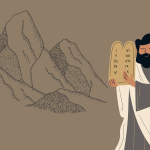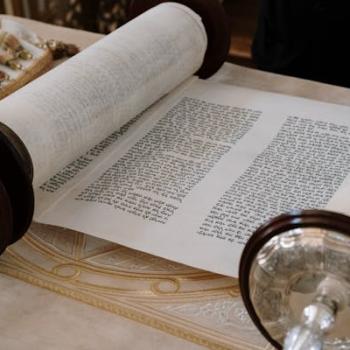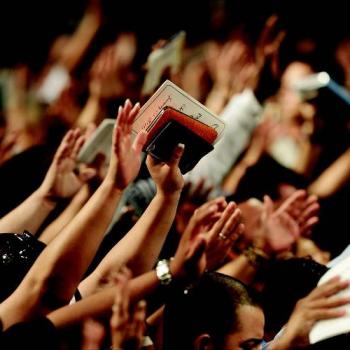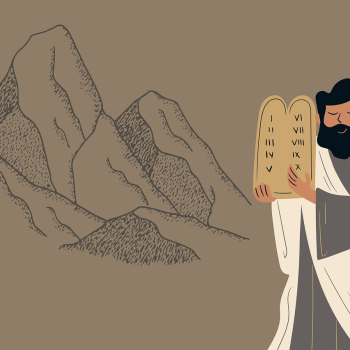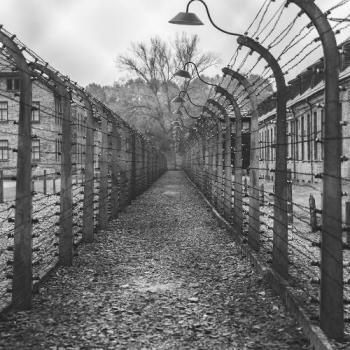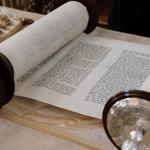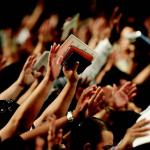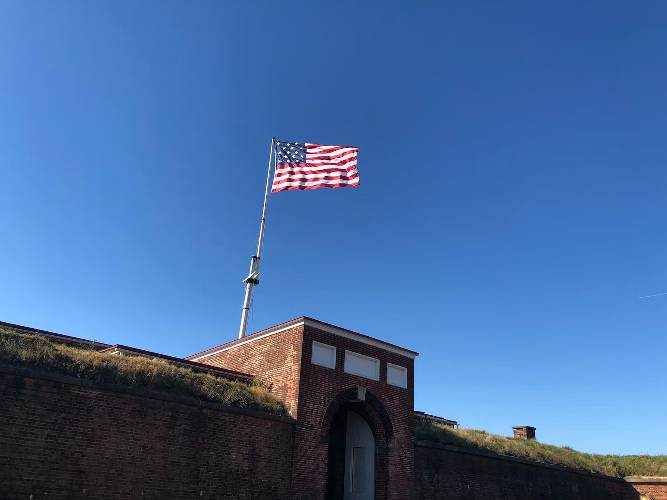
THE RELIGION GUY’S ANSWER:
To thrive, the United States needs, yes, to be “united,” which is a challenge this polarized July 4th. The population’s hugely varied array of backgrounds has always meant unity grows from shared democratic governance and ideals rather than ethnic bonds or a single religious heritage.
In troubled times, this uniquely complex nation has sought to uplift shared symbols of freedom and fellowship, often with a religious flavor. That instinct presumably underlies this week’s new law in Louisiana that mandates Ten Commandments displays in classrooms, though the effect will likely be disunifying.
Back in 1931, during a terrifying economic Depression, President Hoover signed Congress’s bill to make “The Star-Spangled Banner” the National Anthem. That made permanent a similar executive order from President Wilson in 1916 as the nation struggled to avoid a savage world war.
Solace from “civil religion”
In the 1950s, threatened by expanding international Communism with its brutally enforced atheism, the nation sought solace and identity in “civil religion.” In 1951, the New York State Regents authorized a bland, non-sectarian prayer to God for daily schoolroom recitations (outlawed by the Supreme Court in 1962).
In 1953, encouraged by evangelist Billy Graham, President Eisenhower endorsed the first annual Presidential Prayer Breakfast. The following year, a campaign by the Knights of Columbus culminated in Eisenhower signing Congress’s bill to insert “under God” into the Pledge of Allegiance. In 1956, Eisenhower signed the law designating the national motto to be “In God we Trust,” taken from the rarely-sung fourth stanza of the National Anthem, and required it to appear on all currency.
When Major League Baseball resumed operations after September 11, 2001, the leagues ordered teams to play “God Bless America” at each game. Irving Berlin had revised and published his popular hymn in 1938 when, as the verse says, “the storm clouds” of world war gathered “far across the sea.” Baseball’s observance faded, but is still honored by the New York Yankees, whose town had come under attack.
Why did the government choose “The Star-Spangled Banner,” with Francis Scott Key’s words inspired during Britain’s bombardment of Fort McHenry in Baltimore during the War of 1812? There were other longstanding patriotic favorites, the frivolous “Yankee Doodle” and triumphant “Hail Columbia.” Also “America” (“My country, ‘tis of thee”), though the tune of Britain’s national anthem was not appropriate for America’s.
Musical unification
The rousing 1862 “Battle Hymn of the Republic” was fiercely disunifying, the North summoning God’s “fateful lightning” against the the slave state in the South. After the Civil War, “The Star-Spangled Banner” emerged as a much-needed symbol of national unity at ceremonies, and was well-established before the rise of the competing “America the Beautiful.”
This newcomer combined an 1888 hymn tune by Episcopal church organist Samuel Ward with a poem by Wellesley College professor Katharine Lee Bates, first published in a Congregational church weekly in 1895 and revised in 1904. The pious Bates invoked God in each stanza, so proponents of strict separation of church and state might spurn it as an anthem, while Key’s first verse avoids mention of God.
Ward’s flowing tune would have solved the major problem raised in Congress’s 1931 National Anthem debate, that it’s nearly unsingable by ordinary folk. Over the years, some have questioned the appropriateness of John Smith’s accompanying tune, a British barroom favorite to laud a wine-loving Greek poet, or have lamented that Key’s words are so narrowly militaristic. Not to mention that Key, who so proudly hailed “the land of the free,” was a slave-owner.
In 2016, National Football League quarterback Colin Kaepernick first famously kneeled in protest during the customary pregame Anthem. He explained, “I am not going to stand up to show pride in a flag for a country that oppresses Black people and people of color.” The Anthem and professional sports, both of which had helped unify Americans, became racially divisive.
“Black National Anthem”
That message is radically different from the spirit of the “Black National Anthem” performed on Juneteenth this week, the beloved and soulful hymn “Lift Every Voice and Sing.” Listen to it during worship at the 216-year-old Abyssinian Baptist Church in New York City: www.youtube.com/watch?v=fGaEV_ir3KQ/. The stirring words can be read at https://genius.com/James-weldon-johnson-lift-every-voice-and-sing-annotated/,
Historical note: Juneteenth (June 19) was chosen in 2021 for a federal holiday celebrating the demise of slavery because on that date in 1865 an Army general read President Lincoln’s 1863 Emancipation Proclamation to freed slaves in Galveston. But it was Congress’s narrow passage of the 13th Amendment on January 31 that year, with ratification December 6, that outlawed slavery. Juneteenth thus overshadows the actual abolition, which was a historic Republican victory over Democratic opponents.
The hymn, praised last weekend in The Wall Street Journal’s “Masterpiece” feature, originated with a 1900 birthday tribute to Lincoln. The words were written by the son of a part-time Black preacher, poet James Weldon Johnson (1871-1938), soon after set to music by his brother, composer J. Rosamund Johnson (1873-1954). This brotherly duo later achieved considerable songwriting success on Broadway and Tin Pan Alley.
James is famed as a leader of the Harlem Renaissance best known for “God’s Trombones: Seven Negro Sermons in Verse” (1927). He was also a high school principal, college professor, United States diplomat, Florida’s first Black lawyer, and for a decade the first Black executive secretary of the NAACP.
Rolling music, contrasting verses
Rosamund’s distinctively rolling, gospel-inflected music employs the AABA structure of popular song for a march complete with a “break-up strain,” cleverly dramatized by an extra measure plus fermata. James’s poetry needs to be read in its entirety because the three verses are so different.
Verse one pulses with optimism about America with the “harmonies of liberty,” “rejoicing,” “a song full of faith” and “hope,” and “our new day begun.”
Verse two graphically recounts African-Americans’ “gloomy” past when “hope unborn had died,” with “bitter” beatings and slaves walking a path watered with tears and wading “through the blood of the slaughtered.”
Verse three reminds us that polls show African-Americans are generally more devout than whites. It consists of an emphatic prayer of thanksgiving to the God who “led us into the light.” There’s a warning that the populace must never “stray” from or “forget” God, and concludes with this vow: “May we forever stand, true to our God, true to our native land.” Amen.



